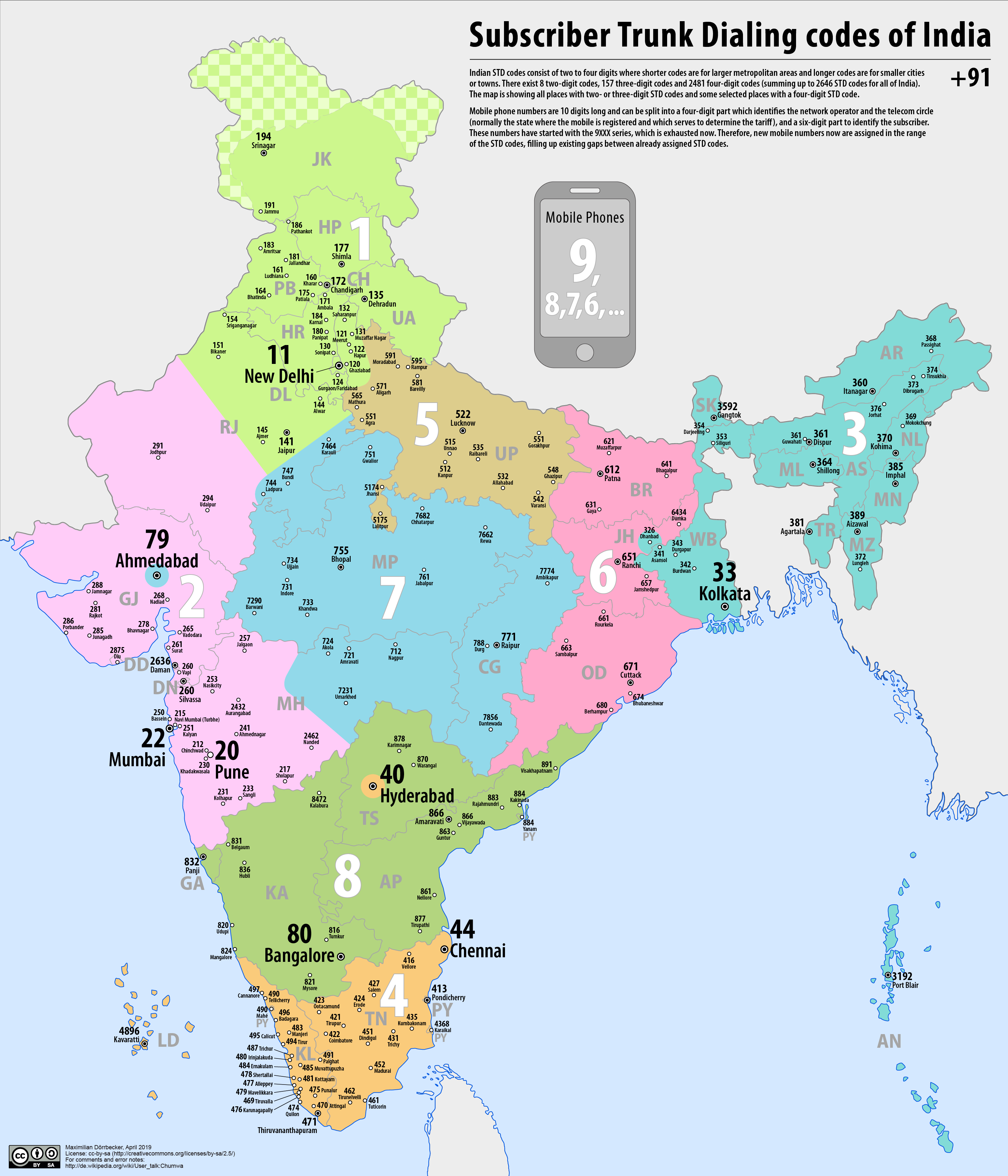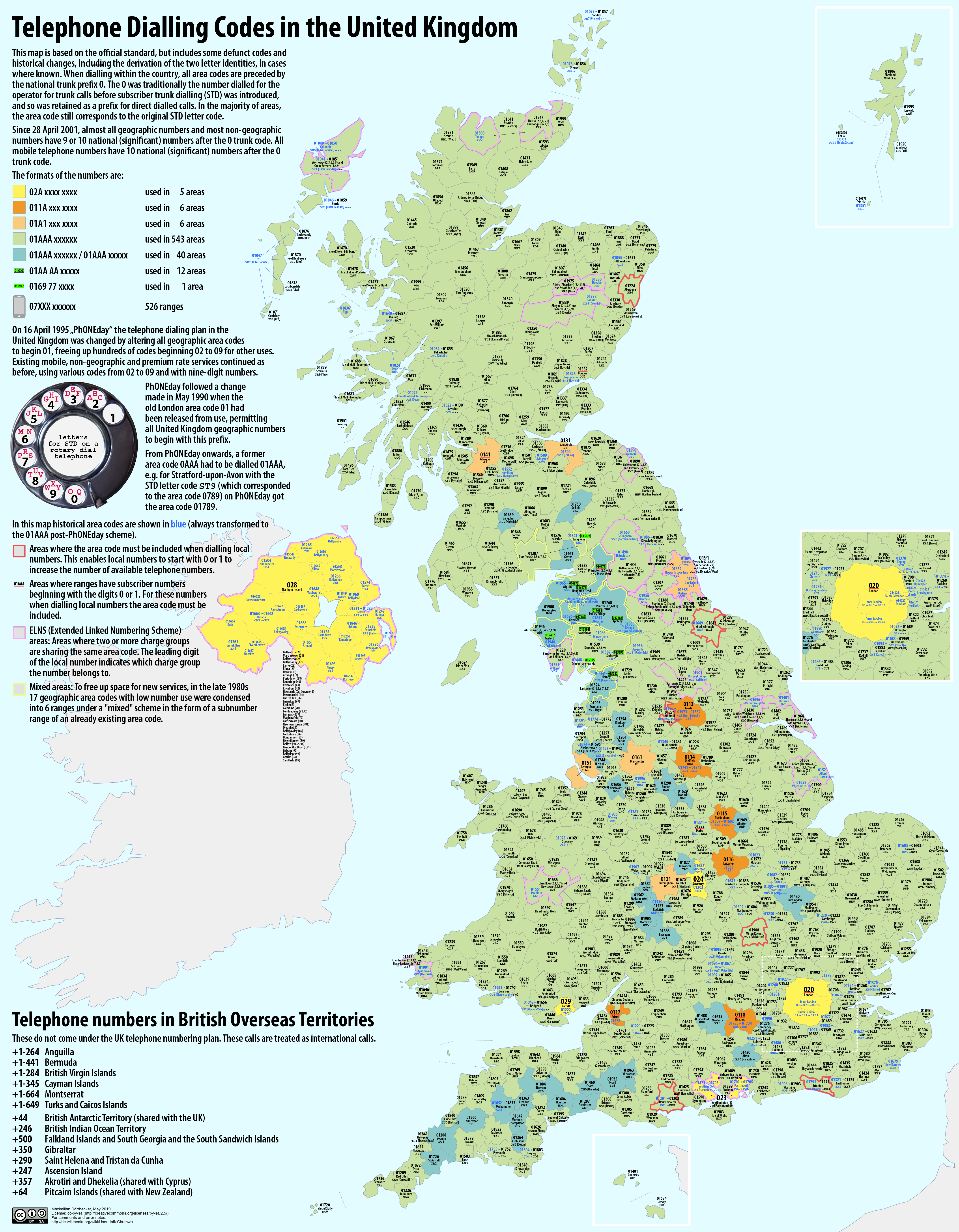|
Subscriber Trunk Dialling
Subscriber trunk dialling (STD), also known as subscriber toll dialing, is a telephone numbering plan feature and telecommunications technology for the dialling of trunk calls by telephone subscribers without the assistance from switchboard operators. Switching systems to enable automatic dialling of long distance calls by subscribers were introduced in the United Kingdom on 5 December 1958. The system used area codes that were based on the letters in a town's name. A ceremonial first call was made by Queen Elizabeth II from Bristol to Edinburgh. A similar service, built on crossbar equipment, using regionally structured numbering, rather than alphanumeric codes, was experimentally introduced by P&T in Ireland in 1957, with the first services being in Athlone. A full service was rolled out in 1958, initially to exchanges in Cork and then Dublin and its hinterland, and gradually to all areas with automatic exchanges. The term 'STD call' was once commonly used in the UK, Irela ... [...More Info...] [...Related Items...] OR: [Wikipedia] [Google] [Baidu] |
Telephone Numbering Plan
A telephone numbering plan is a type of numbering scheme used in telecommunication to assign telephone number A telephone number is a sequence of digits assigned to a landline telephone subscriber station connected to a telephone line or to a wireless electronic telephony device, such as a radio telephone or a mobile telephone, or to other devices f ...s to subscriber telephones or other telephony endpoints. Telephone numbers are the addresses of participants in a telephone network, reachable by a system of destination code routing. Telephone numbering plans are defined in each of the administrative regions of the public switched telephone network (PSTN) and in private telephone networks. For public numbering systems, geographic location typically plays a role in the sequence of numbers assigned to each telephone subscriber. Many numbering plan administrators subdivide their territory of service into geographic regions designated by a prefix, often called an area code or ... [...More Info...] [...Related Items...] OR: [Wikipedia] [Google] [Baidu] |
Telephone Dial
A rotary dial is a component of a telephone or a telephone switchboard that implements a signaling technology in telecommunications known as pulse dialing. It is used when initiating a telephone call to transmit the destination telephone number to a telephone exchange. On the rotary dial, the digits are arranged in a circular layout, with one finger hole in the finger wheel for each digit. For dialing a digit, the wheel is rotated against spring tension with one finger positioned in the corresponding hole, pulling the wheel with the finger to a stop position given by a mechanical barrier, the finger stop. When released at the finger stop, the wheel returns to its home position driven by the spring at a speed regulated by a governor device. During this return rotation, an electrical switch interrupts the direct current (DC) of the telephone line (local loop) the specific number of times associated with each digit and thereby generates electrical pulses which the telephone exchang ... [...More Info...] [...Related Items...] OR: [Wikipedia] [Google] [Baidu] |
Telephone Numbers In India
Telephone numbers in India are administered under the ''National Numbering Plan of 2003'' by the Department of Telecommunications of the Government of India. The numbering plan was last updated in 2015. The country code "91" was assigned to India by the International Telecommunication Union in the 1960s. Fixed-line (landline) numbers Subscriber trunk dialling (STD) codes are assigned to each city, town and village. These codes can be between 2 and 8 digits long, with the largest metropolitan areas and cities having the shortest (two-digit) codes: *11 - New Delhi, Delhi *22 - Mumbai, Maharashtra *33 - Kolkata, West Bengal *44 - Chennai, Tamil Nadu *20 - Pune, Maharashtra *40 - Hyderabad, Telangana *79 - Ahmedabad, Gujarat *80 - Bengaluru, Karnataka Second-tier cities and metropolitan areas, as well as large or particularly significant towns have three-digit area codes: *120 - Ghaziabad and Noida, Uttar Pradesh *124 - Gurugram, Haryana *129 - Faridabad, ... [...More Info...] [...Related Items...] OR: [Wikipedia] [Google] [Baidu] |
Telephone Numbers In The Republic Of Ireland
Numbers on the Irish telephone numbering plan are regulated and assigned to operators by ComReg. Overview Telephone numbers in Ireland are part of an open numbering plan that allows variations in number length. The Irish format is similar to systems used in many parts of Europe, notably the Netherlands, Sweden, Germany, Belgium and France, where geographical numbers are organised using a logic of large regional prefixes, which are then further subdivided into smaller regions. It differs from UK numbering, which originated as alphanumeric codes based on town names. Irish Mobile and non–geographic numbers are fixed length and do not support local dialling. The trunk prefix 0 is used to access numbers outside the local area and for all mobile calls. This is followed by an area code, referred to as a National Dialling Code (NDC), the first digit of which indicates the geographical area or type of service (e.g. mobile). Calls made from mobile phones and some VoIP systems always ... [...More Info...] [...Related Items...] OR: [Wikipedia] [Google] [Baidu] |
Telephone Numbers In The United Kingdom
Telephone numbers in the United Kingdom are administered by the Office of Communications (Ofcom). For this purpose, Ofcom established a telephone numbering plan, known as the ''National Telephone Numbering Plan'', which is the system for assigning telephone numbers to subscriber stations. The numbers are of variable length. Local numbers are supported from land-lines or numbers can be dialled with a '0'-lead prefix that denotes either a geographical region or another service. Mobile phone numbers have their own prefixes which are not geographical and are completely portable between providers. Structure All mobile numbers, nearly all geographic numbers and nearly all non-geographic numbers have 10 national (significant) numbers after the "0" trunk code. The overall structure of the UK's National Numbering Plan is: A short sample of geographic numbers, set out in the officially approved (Ofcom) number groups: In the United Kingdom, area codes are two, three, four or, excep ... [...More Info...] [...Related Items...] OR: [Wikipedia] [Google] [Baidu] |
Trunk Prefix
A trunk prefix is a digit sequence to be dialed before a telephone number to initiate a telephone call for the purpose of selecting an appropriate telecommunications circuit by which the call is to be routed. Making a domestic (national) telephone call usually requires the dialing of a single or two-digit national trunk prefix preceding any area codes and the destination subscriber number. In most countries, such as Australia, China, India, France, Germany, Indonesia, Japan, the Netherlands, Sweden, and the United Kingdom, the trunk prefix is 0. For international telephone calls, the national trunk prefix is not dialed; instead, an international trunk prefix (or "+") is typically required, followed by the destination's country code. Example Assume that a call is to be made to a customer in the Australian Area/State of Queensland with the local number of 3333 3333 and the area code 7. A caller from outside Australia must dial the international call prefix of the originating coun ... [...More Info...] [...Related Items...] OR: [Wikipedia] [Google] [Baidu] |
Director Telephone System
The director telephone system was a development of the Strowger or step-by-step (SXS) switching system used in London and five other large cities in the UK from the 1920s to the 1980s. A large proportion (c. 70% to 80%) of telephone traffic in large metropolitan areas is outgoing traffic, and it is distributed over many exchanges. A non-director SXS exchange system is not suitable for these areas. As the translation facility incorporated was similar to the register in common control systems, the director system incorporates two features of the Panel system, which was introduced in large American cities, and which were required regardless of the type of exchange system for these large areas, which would have a mixture of manual and automatic exchanges for some years. Customer stations were assigned seven-digit numbers, with the first three digits spelling out the local exchange name; this expedited call handling particularly to and from manual exchanges. Direct or tandem junctio ... [...More Info...] [...Related Items...] OR: [Wikipedia] [Google] [Baidu] |
Trunking
In telecommunications, trunking is a technology for providing network access to multiple clients simultaneously by sharing a set of circuits, carriers, channels, or frequencies, instead of providing individual circuits or channels for each client. This is reminiscent to the structure of a tree with one trunk and many branches. Trunking in telecommunication originated in telegraphy, and later in telephone systems where a trunk line is a communications channel between telephone exchanges. Other applications include the trunked radio systems commonly used by police agencies. In the form of link aggregation and VLAN tagging, trunking has been applied in computer networking. Telecommunications A trunk line is a circuit connecting telephone switchboards (or other switching equipment), as distinguished from local loop circuit which extends from telephone exchange switching equipment to individual telephones or information origination/termination equipment. Trunk lines are used fo ... [...More Info...] [...Related Items...] OR: [Wikipedia] [Google] [Baidu] |
Trunk Versus Toll Telephony
Trunk and toll calling were two alternative methods of charging customers for long-distance calls in the United Kingdom in the first half of the 20th century. The distinction became obsolete with the introduction subscriber trunk dialling (STD). History In the UK, local as well as long-distance telephone calls were chargeable to the caller and the term trunk calling was adopted for long-distance calls. Initially a ''trunk call'' had to be booked in advance and a switchboard operator called the subscriber when the call set-up was completed; a process known as 'delay working'. Due to increasing demands for trunk calls from London and the associated delays in connecting them, calls to exchanges adjacent to the London director area were transferred to a new toll exchange opened on 17 September 1921. Calls to toll area exchanges were connected on-demand whilst the originating subscriber waited, thus improving service and reducing operator costs. The London Toll Area boundary was ext ... [...More Info...] [...Related Items...] OR: [Wikipedia] [Google] [Baidu] |
UK Area Codes
This is a list of telephone dialling codes in the United Kingdom, which adopts an open telephone numbering plan for its public switched telephone network. The national telephone numbering plan is maintained by Ofcom, an independent regulator and competition authority for the UK communications industries. This list is based on the official standard, but includes defunct codes and historical changes, including the derivation of the two letter identities, in cases where known. — contains largely the same information as this page. — The original alphanumeric codes in all their glory! Dialling codes do not correspond to specific political boundaries: for example, the Coventry dialling code covers a large area of Warwickshire and the Manchester dialling code covers part or all of several neighbouring towns. When dialling within the country, all area codes are preceded by the national trunk prefix 0, which has been included in all listings in this article. 0 was traditionally the n ... [...More Info...] [...Related Items...] OR: [Wikipedia] [Google] [Baidu] |


